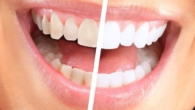
The main symptoms of omega-3 deficiency have been identified
0
Most often, the body does not get enough omega-3. This can lead to dangerous and serious consequences. It became known how to determine the deficiency by the first symptoms.
Omega-3 is a group of polyunsaturated fatty acids that protect cell membranes and internal organs from destruction. Without such compounds, full-fledged work of the nervous, immune and cardiovascular systems is impossible. In addition, they restrain inflammatory processes, improve the condition of the joints, fight emotional disorders and chronic fatigue syndrome.
Deficiency of omega-3 in the body is often indicated by deterioration of the skin – dryness, sensitivity or acne. Omega-3 fats improve the integrity of skin barriers, preventing moisture loss and protecting it from irritants that can lead to common problems.
According to scientists, Omega-3 fatty acids can help treat neurodegenerative diseases and brain disorders such as Alzheimer's disease, dementia and bipolar disorder. Many studies show a correlation between low omega-3 levels and higher rates of depression.
Omega-3 also helps keep hair healthy. Changes in the structure, integrity and density of hair may indicate a deficiency of an important substance in the body.
In addition, common symptoms of omega-3 deficiency include constant thirst, brittle nails, joint and muscle pain, slow healing of wounds, bruises, scratches, fatigue, weakness, loss of ability to work and frequent colds, as a result of reduced immunity.









Leave a Reply